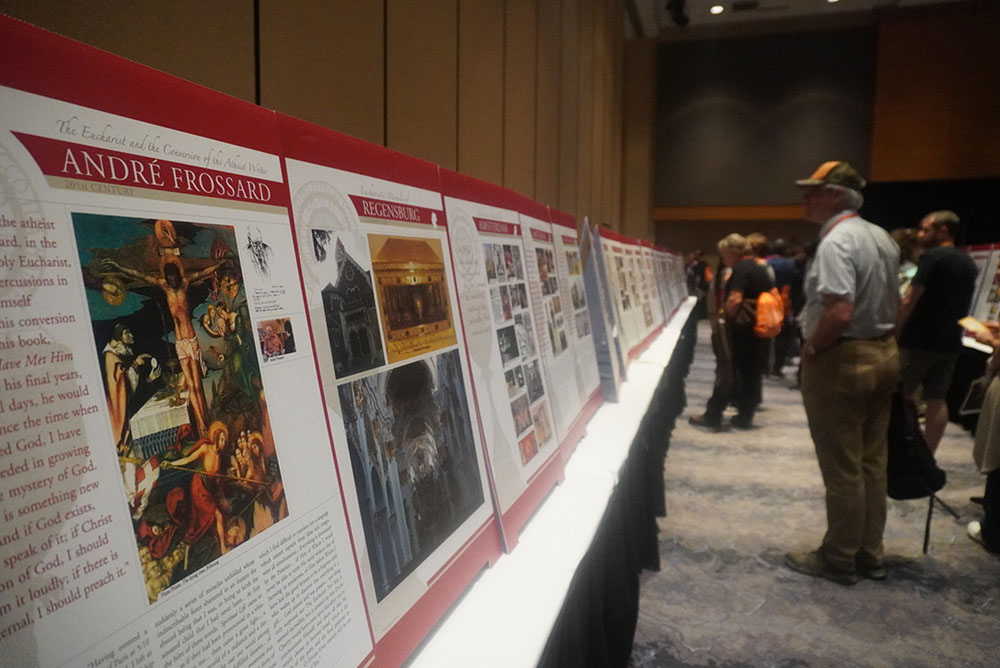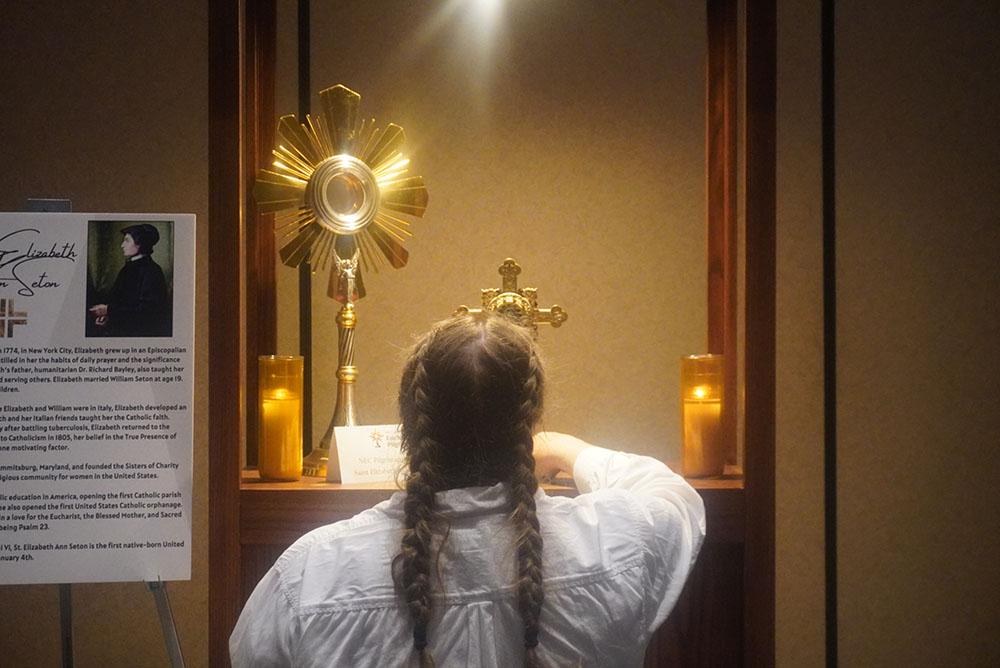
INDIANAPOLIS — An international exhibit designed and created by Blessed Carlo Acutis, showcasing the miracles he documented on his website before his death, made its way to the National Eucharistic Congress.
Titled “The Eucharistic Miracles,” the exhibit drew lines of hundreds at any time while it was open from Wednesday, July 17 to Saturday, June 20, providing both an opportunity to read about the soon-to-be saint’s work and pray before his relic. Some waited upwards of two hours to see the exhibit and venerate the relics displayed in the adjacent chapel, including Blessed Carlo Acutis and the Virgin Mary.
“I’m fascinated by the saints, and I look forward to seeing some of the miracles,” Uma Staehler, from Boston, said after standing in line for 45 minutes.
After stumbling across the campaign for Blessed Acutis’ sainthood while visiting Assisi, Staehler became enthralled by his story.
“I’m just kind of fascinated,” she said. “The saint for the internet — that seems pretty modern.”
Thanks in part to his interest in the internet and devout faith, Blessed Acutis, or “the first Millennial saint,” has been an integral part of the Catholic community since he was beatified four years ago. Dying at just 15 years old from leukemia, he is particularly popular among young Catholics, as evidenced by the varying ages of people waiting to see his work come to life in the exhibit.
“We wanted to see Jesus in the eucharistic miracles,” Anna Barghese, 12, said. “As we all know, Carlo Acutis is going to be a saint next year, so it’s good to see his work.”
The organization of the exhibit dates back to before Pope Francis recognized the second official miracle by Blessed Acutis, solidifying that his canonization will take place at some point soon. That recognition just makes the celebrations of his work at the National Eucharistic Congress that much sweeter, said Deacon Jeff Powell, a lead volunteer for the chapel.
“He’s a very popular young man,” said Deacon Powell, who is part of the Archdiocese of Indianapolis. “When we started, we had no idea if people would even take time to come through to see relics, andd now they have been waiting two and a half and three hours.”
As visitors entered the exhibit, they were met with dozens of posters detailing the different Eucharistic miracles he documented on his website. The posters, offered in Spanish and English, included the miracles at Fatima, Asti, and Bolsena, among others.
After viewing the posters, visitors had the opportunity to pray before the first-class relics of eight saints and the blessed. Unsurprisingly, the line for the first-class relic of Blessed Acutis — a piece of his pericardium, the sac that surrounded his heart — was among the longest.
However, his relic was not the only one drawing attention from the congress visitors, as they had the opportunity to pray before the relics of the saints who represented the four routes of the National Eucharistic Pilgrimage: St. Junipero Serra, St. Elizabeth Ann Seton, St. Juan Diego, and the Virgin Mary.

“It was such a gift. They are such big heroes of our Catholic faith, particularly in the United States,” said Carlos Roberto Ramirez, coming to the National Eucharistic Congress from Cincinnati. “Having a chance to just venerate these relics of [saints] who have done so much for us and so many people, it’s such a gift.”
